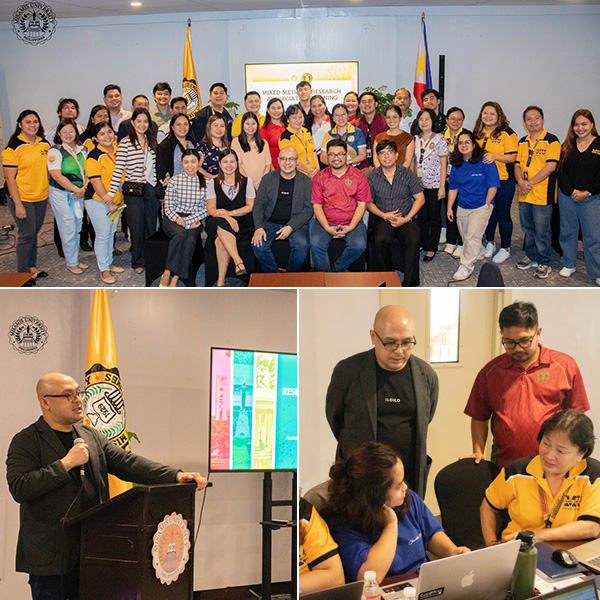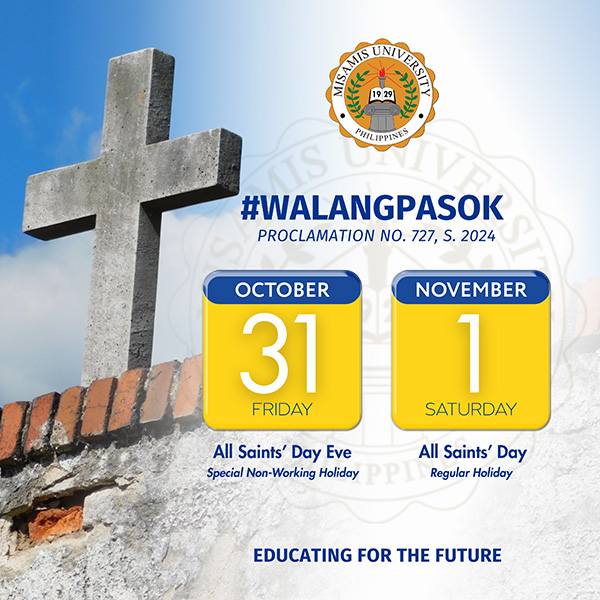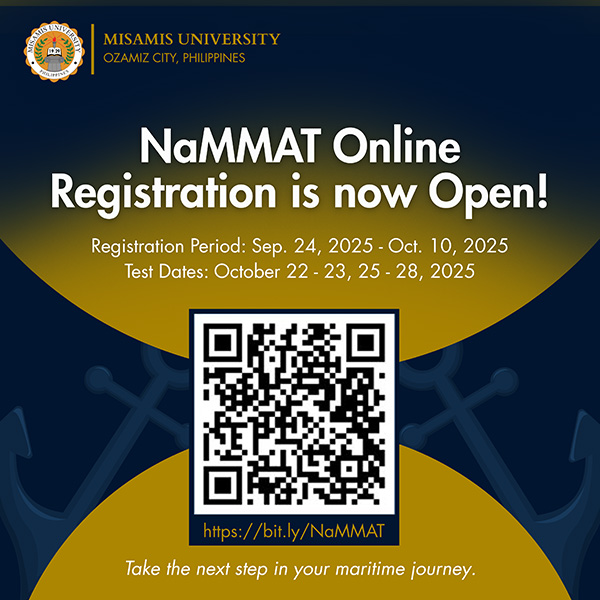
Misamis University, in collaboration with the University of the Philippines Los Baños, successfully held the Mixed-Methods Research Appreciation Training on March 1, 2025, at the Function Hall.
Recognizing the growing interest in Mixed Methods Research, the Linkage Office, Research Center, and Graduate School faculty initiated this training to equip participants with the knowledge and skills needed to effectively apply various Mixed Methods Research designs. The training also aimed to guide the implementation of these methods in undergraduate and graduate theses across colleges, enabling Misamis University researchers to integrate both quantitative and qualitative approaches effectively.
Rufo Gil Z. Albor, PhD, Assistant Professor and College Secretary of the College of Human Ecology, served as the resource person for the training. He was assisted by Reniel S. Pamplona, PhD, Assistant Professor and Head of the Crop Biotechnology Division, Institute of Crop Science, College of Agriculture and Food Science. Both are from the University of the Philippines Los Baños, Laguna.
A total of 33 selected participants joined the training and were divided into five groups based on their disciplines. Cluster A1: Humanities and Social Sciences included selected faculty from the College of Arts and Sciences, College of Business and Management, and College of Education. Cluster A2: Humanities and Social Sciences consisted of faculty from the College of Criminology, Basic Education, and Graduate School. Cluster B: Health Sciences comprised faculty from Nursing and Radiologic Technology, the College of Medical Technology, and the College of Dentistry. Cluster C: Technology included faculty from the College of Computer Studies, College of Engineering and Technology, and College of Maritime Education. Cluster D: Agriculture and Environmental Science was composed of faculty from the College of Agriculture and Forestry, Natural Science Department, and MU Community Extension Program (MUCEP).
Dr. Albor delivered his lecture on the subject matter throughout the morning, emphasizing the importance of Mixed Methods Research (MMR). He explained that MMR is essential as it provides comprehensive insights, enhances validity, ensures balance by maintaining both breadth and depth, and offers flexibility by focusing on extreme values that require further qualitative analysis. Additionally, MMR is widely used due to its multidisciplinary nature.
Focusing on the different types of Mixed Methods Research (MMR), Dr. Albor clarified the purpose and application of each. Convergent Parallel Design is used when quantitative and qualitative data are collected simultaneously and then merged. Explanatory Sequential Design involves collecting quantitative data first, followed by qualitative data to provide further explanation. Exploratory Sequential Design begins with qualitative data collection when the variables to be quantified are not yet clearly identified; once identified, quantitative data collection follows. Embedded Design integrates qualitative data by including open-ended questions in the questionnaire.
In the afternoon, an open forum provided further clarification on sampling procedures and emphasized that technology disciplines can also incorporate qualitative studies, as long as they examine technology in relation to human participation.
This was followed by a workshop where participants discussed and completed a matrix to guide them in formulating their proposed research titles using the MMR design. The workshop included selecting an appropriate MMR design, identifying research problems, and determining the tools and analytical techniques for their proposals. Dr. Renzitelo Alf Carpio presented the output for Cluster A1, Dr. Analyn Clarin for Cluster A2, Mr. Karl Lao for Cluster B, Dr. Mhei Daniel for Cluster C, and Ms. Emmarie Mapiot for Cluster D. To make the session more engaging, the presenters incorporated greetings from various countries to capture the audience’s attention.
In their response to the presentations, Dr. Albor and Dr. Pamplona emphasized that the research questions, presented as the study's problem, must align perfectly with the chosen statistical tools and analysis techniques. They reminded participants to ensure proper alignment, regardless of how simple the statistical tools may be, as they must effectively support the study's purpose. They also commended the proposal of Cluster A2, led by Dr. Analyn Clarin, Director of Curriculum Design and Development and of Instruction and Evaluation, encouraging them to seek funding, as they found the study feasible, with well-defined research problems and an appropriate Mixed Methods Research (MMR) methodology.
The training informed participants that the research designs previously used by MU faculty are also applied in theses at UPLB, highlighting commonalities between the two institutions. It also clarified that the combination of quantitative and qualitative methods, which MU’s graduate school had already been implementing, now has a clearer classification within MMR. Participants gained a better understanding of how to apply MMR in their studies. Moving forward, the training aims to encourage the adoption of MMR in both undergraduate and graduate programs, strengthening Misamis University’s research initiatives.
Announcement

|

|

|
Videos

|

|

|














